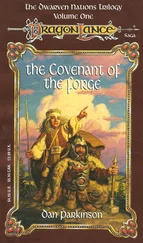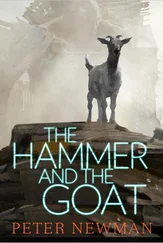Dan Parkinson - Hammer and Axe
Здесь есть возможность читать онлайн «Dan Parkinson - Hammer and Axe» весь текст электронной книги совершенно бесплатно (целиком полную версию без сокращений). В некоторых случаях можно слушать аудио, скачать через торрент в формате fb2 и присутствует краткое содержание. Жанр: Фэнтези, на английском языке. Описание произведения, (предисловие) а так же отзывы посетителей доступны на портале библиотеки ЛибКат.
- Название:Hammer and Axe
- Автор:
- Жанр:
- Год:неизвестен
- ISBN:нет данных
- Рейтинг книги:4 / 5. Голосов: 1
-
Избранное:Добавить в избранное
- Отзывы:
-
Ваша оценка:
- 80
- 1
- 2
- 3
- 4
- 5
Hammer and Axe: краткое содержание, описание и аннотация
Предлагаем к чтению аннотацию, описание, краткое содержание или предисловие (зависит от того, что написал сам автор книги «Hammer and Axe»). Если вы не нашли необходимую информацию о книге — напишите в комментариях, мы постараемся отыскать её.
Hammer and Axe — читать онлайн бесплатно полную книгу (весь текст) целиком
Ниже представлен текст книги, разбитый по страницам. Система сохранения места последней прочитанной страницы, позволяет с удобством читать онлайн бесплатно книгу «Hammer and Axe», без необходимости каждый раз заново искать на чём Вы остановились. Поставьте закладку, и сможете в любой момент перейти на страницу, на которой закончили чтение.
Интервал:
Закладка:
When first planned, Thorbardin’s gates had been envisioned as hinged plugs, an effective closure developed by Daewar delvers in times long past. But as the great fortress grew, and the skills of Daewar, Theiwar, and Daergar blended with the crafts of the Hylar, many plans had been modified and improved. A hinged plug could be circumvented by intruders, given the time and the tools to work on it. A screw-driven plug, internally operated and driven flush into a sleeved opening, could not.
It had been the intention of the original architects of Thorbardin—many of whom still directed the thousands of tasks that went into the project—that the fortress be impregnable to outside attack. Within Thorbardin were the finest craftsmen, the greatest delvers and builders, and the best fortress-planners in the world, and being dwarves they were not adverse to hard work. With its gates in place and working, backed by the great defense passages called Anvil’s Echo—huge tunnels two hundred feet high, lined with murder holes and passable only by a narrow bridge suspended halfway up—Thorbardin would be difficult if not impossible to enter for anyone the dwarves decided to keep out.
Every dwarf above the age of first crafting was as skilled in the use of weapons as in the use of tools. It had become a staple of dwarven lore in Thorbardin—originated from old stories told by the Hylar—that the only basic difference between a tool and a weapon was in the using of it. A climbing javelin thrown at an enemy was a spear. A delving hammer swung at the skull of an enemy was a war hammer. A crafter’s axe cleaving an enemy shield was a battle-axe. A delver’s metal hat worn in combat was a helm, and a fending shield in battle was a fighting shield.
True, there were some weapons that had little use as tools. A bow was not as efficient as a sling for delivering small goods from level to level, a lance made a poor javelin, and swords were forged primarily as trade goods, to be bartered to the humans of the Ergothian orders for things more useful. Of all the dwarves of Thorbardin, only among the Hylar, with their background of human dealings, were there many who would choose a sword over a good hammer as personal armament. And even among the Hylar, the hammer was highly prized as both a tool and a weapon.
It was one of the differences that had developed over the years between the dwarves of Thorbardin and their outside cousins, the Neidar and the scattered Einar. The undermountain dwarves were known for their love of the hammer, while those outside usually favored the axe.
But whatever tool was at hand, weapons would always be ready to be turned instantly on any outsider trying to invade the fortress of Thorbardin.
As Quill Runebrand, keeper of scrolls, was fond of saying, “There isn’t a conceivable subject that all the people of Thorbardin would ever agree about, except one. Intruders are not welcome here. We might squabble over what day it is, or come to blows over whether there are really two moons or three, but we all agree on the defense of Thorbardin.”
Today, the keeper of scrolls was tagging after Willen Ironmaul as the chieftain of the Hylar, accompanied by his ten personal guards and several Thorbardin officials, toured the facilities of Northgate.
From the growing city of Hybardin, delved into a giant stalactite in the center of the underground realm, the group had gone by cable-boat across the northern Urkhan Sea to the piers of Theibardin, where Willen Ironmaul stopped off to visit briefly with the Theiwar chieftain, Slide Tolec. Then they had followed the Second Road to the newly expanded cavern that would one day be Thorbardin’s second Hall of Justice—the South Hall was becoming so busy these days, with the expansion of a boisterous and quarrelsome population, that a North Hall would be needed soon—and from there northward to Northgate, stopping for a quick look at the great, sheer-sided pit that the delvemaster ironically called the “Shame of Reorx.” It was to have been a magma pit, like the Shaft of Reorx now being completed near Southgate, but here it had not worked.
“One of our failures,” Shaft Redstone said sadly as the group assembled at the edge of the great hole that fell away into darkness below. “Six hundred feet straight down, through solid rock, and there is nothing down there except more solid rock. No steam vents, no fissures, not even a rising of temperatures. A miscalculation, pure and simple. Beneath Southgate there is ignitable magma, so we assumed there would be some here as well. We were wrong.”
“Too bad,” Willen Ironmaul sympathized. “It’s a nice hole, though.”
“Two years of work.” The delvemaster nodded, then shrugged. “Oh, well, we’ll find a use for it. If it won’t feed smelters, maybe we can use it to store grain or something.”
The area around the pit was well lighted, better so than most of the road, because of a large shaft leading to the surface of the mountain slope. It had been intended to fit the shaft with lenses, like the one near Southgate, so that sunlight could be funneled in to ignite the quiescent magma when it was found. Now, though, dwarven workmen thronged above, installing a sun-tunnel in the shaft. If there was no magma to power, at least the hole could provide daylight.
It was the way much of Thorbardin was lighted. Before the sun-tunnels, the great caverns had been dim places, lit only by natural strata of clear and smoky quartz that ran up through the mountain’s heart. The sun-tunnels, created by the craft of Hylar glaziers—and with great banks of mirrors from their shops—were now located in most parts of Thorbardin, providing good light where it was wanted. Only at night—except in those parts of Thorbardin that belonged to the dark-seeking Daergar—were lamps needed to light the fortress.
From Shaft Redstone’s pit it was only a few hundred yards along a wide, high passage to the sprawling, bustling subterranean village of Gatekeep, a three-level series of delvings hollowed out mostly by Daewar delvers and shored and partitioned by Hylar stonemasons. Shops, craft stalls, and vendor tables lined the main road here, and beyond them were the cubicle-homes of several thousand dwarves—guards and their families, tunnel traders, craftsmen, and others. In recent years, the two portal communities, Gateway to the south and Gatekeep to the north, had grown to be cities in their own right, rivaling in size the original seven cities of Thorbardin, clustered around the subterranean Sea of Urkhan. It was temporary growth, though. Now that Southgate was completed, Gateway was beginning to shrink again. Gatekeep would do the same when North-gate was done, as the builders and their families began to move back to the cities. The Council of Thanes already had plans for the delvings which would be abandoned near the gates. They would be converted into storage for the grains, timber, fibers, smoked meat, furs, and finery accumulated by trade with those in the outside realms and with the humans of Ergoth.
Beyond Gatekeep, three tunnels led to Anvil’s Echo and the great gate. Tunnels from the upper and lower levels led to the corridors of defense above and around Anvil’s Echo. The central tunnel led into the great bridge chamber itself, emerging on the long, suspended bridge that crossed it from one end to the other.
The place was safe now, and quiet as the procession walked along the bridge, but the members of the little group were aware of the eyes watching them from hundreds of holes, and Willen Ironmaul felt a chill as he thought what this passage would be like for anyone trying to invade Thorbardin.
The gatehouse and surrounding delves bustled with activity. Crafters were doing final fittings on the intricate gear mechanisms that would drive the gate-screw, and metalsmiths were fitting pins and sockets for the final installation of the gate itself.
Читать дальшеИнтервал:
Закладка:
Похожие книги на «Hammer and Axe»
Представляем Вашему вниманию похожие книги на «Hammer and Axe» списком для выбора. Мы отобрали схожую по названию и смыслу литературу в надежде предоставить читателям больше вариантов отыскать новые, интересные, ещё непрочитанные произведения.
Обсуждение, отзывы о книге «Hammer and Axe» и просто собственные мнения читателей. Оставьте ваши комментарии, напишите, что Вы думаете о произведении, его смысле или главных героях. Укажите что конкретно понравилось, а что нет, и почему Вы так считаете.











